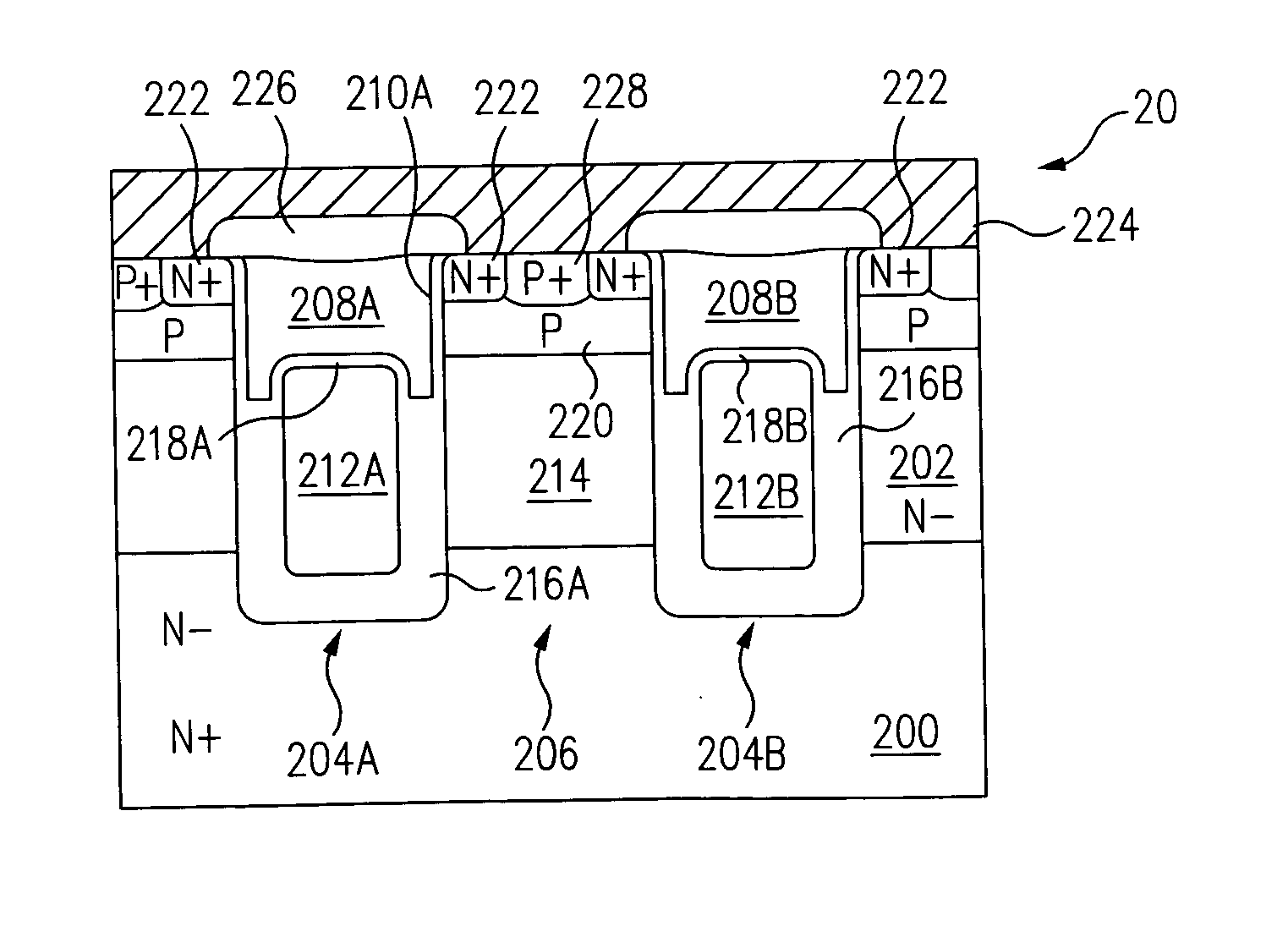Super trench MOSFET including buried source electrode and method of fabricating the same
a source electrode and super-torque technology, applied in the field of trench gated metaloxidesilicon field-effect transistors (mosfets) and diodes, can solve problems such as errors, and achieve the effect of reducing gate-to-drain capacitance and resistivity of drift region when the device is turned
- Summary
- Abstract
- Description
- Claims
- Application Information
AI Technical Summary
Benefits of technology
Problems solved by technology
Method used
Image
Examples
Embodiment Construction
[0034]FIG. 2 illustrates a cross-sectional view of an N-channel MOSFET 20 in accordance with this invention. MOSFET 20 is formed in an epitaxial (epi) layer 202 that is grown on an N+ substrate 200. Trenches 204A and 204B and are formed in epi layer 202. Trenches 204A and 204B are separated by a mesa 206. While FIG. 2 shows only two trenches, it will be understood by those of skill in the art that the trenches and mesas shown in FIG. 2 typically represent only a tiny fraction of the total number of trenches and mesas in the actual device, which may number in the millions. The trenches and mesas may be arranged in a variety of geometric patterns on the surface of epi layer 202. In some of the most common of these patterns, the mesas are hexagons, squares or longitudinal stripes and are separated by trenches of uniform width and depth. As trenches 204A and 204B are identical, only trench 204A will be described in detail. It will be understood that the structure of trench 204B is ident...
PUM
 Login to View More
Login to View More Abstract
Description
Claims
Application Information
 Login to View More
Login to View More - R&D
- Intellectual Property
- Life Sciences
- Materials
- Tech Scout
- Unparalleled Data Quality
- Higher Quality Content
- 60% Fewer Hallucinations
Browse by: Latest US Patents, China's latest patents, Technical Efficacy Thesaurus, Application Domain, Technology Topic, Popular Technical Reports.
© 2025 PatSnap. All rights reserved.Legal|Privacy policy|Modern Slavery Act Transparency Statement|Sitemap|About US| Contact US: help@patsnap.com



